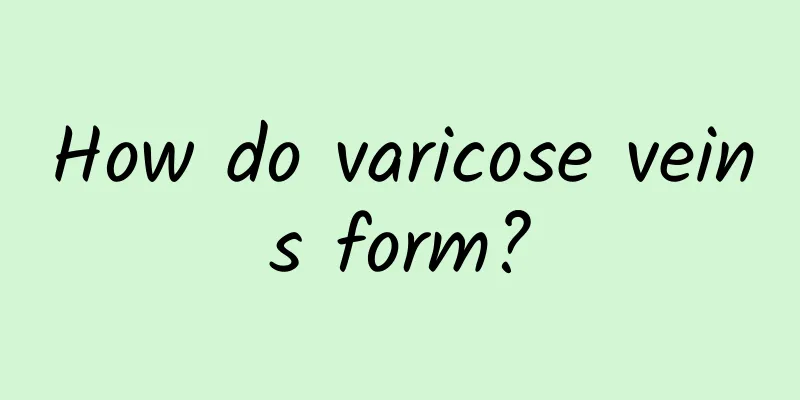Will the pustules in the eyes burst on their own?

|
Pus in the eyes are usually caused by sty. Stye is divided into external sty and internal sty. External sty will eventually rupture and be discharged. When a sty appears, it must be treated in time. In the early stage, hot compress can be used to relieve it. Of course, if it is more serious, surgical incision can be used for treatment. Types of styes 1. External stye It is an acute suppurative inflammation of the Zeis gland. Initially, the eyelid margin shows localized congestion and swelling, and a nodule forms after 2 to 3 days. There is obvious swelling, pain and tenderness. Later, the nodule gradually softens and a yellow pustule forms at the root of the eyelashes, which breaks through and discharges pus quickly. Severe cases may have systemic symptoms such as chills and fever. 2. Internal stye It is an acute purulent inflammation of the meibomian glands. Its clinical symptoms are not as severe as those of external hordeolum, because the inflamed meibomian glands are surrounded by firm tarsal plate tissue. Yellow pus masses are often faintly visible on the surface of the congested palpebral conjunctiva, which may rupture and discharge pus into the conjunctival sac on their own. The opening of the meibomian glands may be slightly raised and congested, and pus may also be discharged along the palpebral gland duct. A few cases may rupture and discharge pus from the skin. If the tarsal plate fails to rupture and the pathogen is highly toxic, the inflammation will expand, invade the entire tarsal plate tissue, and form an eyelid abscess. Clinical manifestations 1. Localized redness, swelling, heat and pain on the eyelid skin, and edema of the adjacent conjunctiva. 2. When pus accumulates locally, yellow pus heads appear. External hordeolum occurs in the sebaceous glands at the root of the eyelashes and manifests itself on the skin surface; internal hordeolum occurs in the meibomian glands and manifests itself on the conjunctival surface. After rupture and drainage of pus, the pain will be relieved and the redness and swelling will subside. 3. Severe cases are accompanied by enlarged and tender preauricular and submandibular lymph nodes, general chills, fever, etc. Treatment 1. Early moist heat compress or magnetic therapy promotes infiltration absorption or rapid suppuration of nodules. 2. Surgical incision: When the inflammation is under control and pus accumulates to form a wave-like feeling, the incision can be made to drain the pus and properly clean up the necrotic or granulation tissue. Depending on the situation, placement of a drainage strip can be considered. After the inflammation subsides, if there is still residual granulation tissue or nodules left, surgical removal can be performed again. However, it should be noted that the skin incision of the external hordeolum should be parallel to the eyelid margin, and the conjunctival incision of the internal hordeolum should be perpendicular to the eyelid margin. Avoid inappropriate squeezing to prevent the inflammation from spreading into the orbit and cranium, causing orbital cellulitis, cavernous sinus phlebitis, meningitis and abscess, which may be life-threatening. 3. Autoimmune therapy can be used for stubborn and recurrent cases. Patients with systemic fever and swollen preauricular and submandibular lymph nodes can be treated with antibiotics. |
<<: What are the effects of eating Panax notoginseng for men?
>>: How to diagnose Parkinson's
Recommend
Is a broken finger serious?
In fact, tendons and bones are two different tiss...
What is the reason for waist and leg pain
There are many reasons for lower back and leg pai...
What are the effects and functions of raw wheat drink?
The so-called raw oatmeal drink refers to drinkin...
What are the antipruritic ointments for children?
Children with skin allergies and eczema are prone...
The efficacy and function of beehive
With the improvement of people's living stand...
Can acupuncture remove dampness?
If there is too much moisture in our body, many d...
The dangers of genital herpes are so great
Genital herpes can have a significant impact and ...
The role and efficacy of cupping for weight loss
Is cupping effective for weight loss? Is cupping ...
Is it normal to have a creaking sound in the cervical spine?
Try not to maintain a posture for a long time, as...
How many days will it take for bloodshot eyes to heal?
Eye congestion is quite common in our daily life....
What should I do if my nail bed shrinks due to onychomycosis?
Onychomycosis is a highly contagious disease that ...
Can Chinese medicine wine lower blood lipids?
I often see such an advertisement on TV, in which...
Quick cough relief method
Now is the season when colds are prevalent. Vario...
How does traditional Chinese medicine treat bone hyperplasia?
Bone hyperplasia is mainly caused by the appearan...
Adrenal adenoma
In medicine, there are many ways to classify adre...









